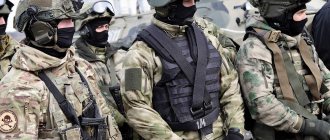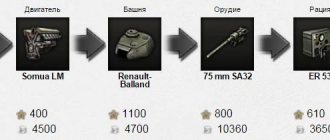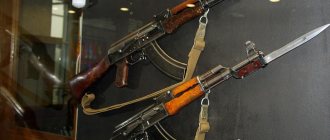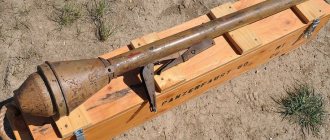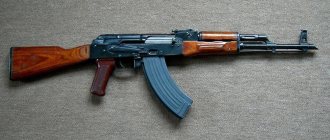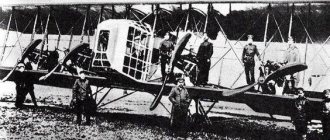On August 12, 1953, the first Soviet hydrogen bomb was tested at the Semipalatinsk test site.
And on January 16, 1963, at the height of the Cold War, Nikita Khrushchev told the world that the Soviet Union had new weapons of mass destruction in its arsenal. A year and a half earlier, the most powerful hydrogen bomb explosion in the world was carried out in the USSR - a charge with a capacity of over 50 megatons was detonated on Novaya Zemlya. In many ways, it was this statement by the Soviet leader that made the world realize the threat of further escalation of the nuclear arms race: already on August 5, 1963, an agreement was signed in Moscow banning nuclear weapons tests in the atmosphere, outer space and under water.
Thermonuclear reactions.
Also on topic:
NUCLEAR WAR
The interior of the Sun contains a gigantic amount of hydrogen, which is in a state of ultra-high compression at a temperature of approx. 15,000,000 K. At such high temperatures and plasma densities, hydrogen nuclei experience constant collisions with each other, some of which result in their fusion and ultimately the formation of heavier helium nuclei. Such reactions, called thermonuclear fusion, are accompanied by the release of enormous amounts of energy. According to the laws of physics, the energy release during thermonuclear fusion is due to the fact that during the formation of a heavier nucleus, part of the mass of the light nuclei included in its composition is converted into a colossal amount of energy. That is why the Sun, having a gigantic mass, loses approx. every day in the process of thermonuclear fusion. 100 billion tons of matter and releases energy, thanks to which life on Earth became possible.
First Soviet research
On December 17, 1945, at a meeting of a special committee created under the Council of People's Commissars of the USSR, nuclear physicists Yakov Zeldovich, Isaac Pomeranchuk and Julius Hartion made a report “Use of nuclear energy of light elements.” This paper examined the possibility of using a deuterium bomb. This speech marked the beginning of the Soviet nuclear program.
In 1946, theoretical research was carried out at the Institute of Chemical Physics. The first results of this work were discussed at one of the meetings of the Scientific and Technical Council in the First Main Directorate. Two years later, Lavrentiy Beria instructed Kurchatov and Khariton to analyze materials about the von Neumann system, which were delivered to the Soviet Union thanks to secret agents in the West. Data from these documents gave additional impetus to the research that led to the birth of the RDS-6 project.
Isotopes of hydrogen.
The hydrogen atom is the simplest of all existing atoms. It consists of one proton, which is its nucleus, around which a single electron rotates. Careful studies of water (H2O) have shown that it contains negligible amounts of “heavy” water containing the “heavy isotope” of hydrogen - deuterium (2H). The deuterium nucleus consists of a proton and a neutron - a neutral particle with a mass close to a proton.
Also on topic:
NUCLEAR WEAPON
There is a third isotope of hydrogen, tritium, whose nucleus contains one proton and two neutrons. Tritium is unstable and undergoes spontaneous radioactive decay, turning into an isotope of helium. Traces of tritium have been found in the Earth's atmosphere, where it is formed as a result of the interaction of cosmic rays with gas molecules that make up the air. Tritium is produced artificially in a nuclear reactor by irradiating the lithium-6 isotope with a stream of neutrons.
Development of the hydrogen bomb.
Preliminary theoretical analysis has shown that thermonuclear fusion is most easily accomplished in a mixture of deuterium and tritium. Taking this as a basis, US scientists at the beginning of 1950 began implementing a project to create a hydrogen bomb (HB). The first tests of a model nuclear device were carried out at the Enewetak test site in the spring of 1951; thermonuclear fusion was only partial. Significant success was achieved on November 1, 1951 during the testing of a massive nuclear device, the explosion power of which was 4 × 8 Mt in TNT equivalent.
Also on topic:
NUCLEAR FUSION
The first hydrogen aerial bomb was detonated in the USSR on August 12, 1953, and on March 1, 1954, the Americans detonated a more powerful (approximately 15 Mt) aerial bomb on Bikini Atoll. Since then, both powers have carried out explosions of advanced megaton weapons.
The explosion at Bikini Atoll was accompanied by the release of large amounts of radioactive substances. Some of them fell hundreds of kilometers from the explosion site on the Japanese fishing vessel "Lucky Dragon", while others covered the island of Rongelap. Since thermonuclear fusion produces stable helium, the radioactivity from the explosion of a pure hydrogen bomb should be no more than that of an atomic detonator of a thermonuclear reaction. However, in the case under consideration, the predicted and actual radioactive fallout differed significantly in quantity and composition.
Operation Ivy
This was the name given to the tests of American thermonuclear weapons in the Marshall Islands in 1952, during which the first thermonuclear bomb was detonated. It was called Ivy Mike and was built according to the Teller-Ulam standard design. Its secondary thermonuclear charge was placed in a cylindrical container, which was a thermally insulated Dewar flask with thermonuclear fuel in the form of liquid deuterium, along the axis of which a “candle” of 239-plutonium ran. The dewar, in turn, was covered with a layer of 238-uranium weighing more than 5 metric tons, which evaporated during the explosion, providing symmetrical compression of the thermonuclear fuel. The container containing the primary and secondary charges was housed in a steel casing 80 inches wide by 244 inches long with walls 10 to 12 inches thick, the largest example of wrought iron up to that time. The inner surface of the case was lined with sheets of lead and polyethylene to reflect radiation after the explosion of the primary charge and create plasma that heats the secondary charge. The entire device weighed 82 tons. A view of the device shortly before the explosion is shown in the photo below.
The first test of a thermonuclear bomb took place on October 31, 1952. The power of the explosion was 10.4 megatons. Attol Eniwetok, where it was produced, was completely destroyed. The moment of the explosion is shown in the photo below.
The mechanism of action of a hydrogen bomb.
The sequence of processes occurring during the explosion of a hydrogen bomb can be represented as follows. First, the thermonuclear reaction initiator charge (a small atomic bomb) located inside the HB shell explodes, resulting in a neutron flash and creating the high temperature necessary to initiate thermonuclear fusion. Neutrons bombard an insert made of lithium deuteride, a compound of deuterium and lithium (a lithium isotope with mass number 6 is used). Lithium-6 is split into helium and tritium under the influence of neutrons. Thus, the atomic fuse creates the materials necessary for synthesis directly in the actual bomb itself.
Then a thermonuclear reaction begins in a mixture of deuterium and tritium, the temperature inside the bomb rapidly increases, involving more and more hydrogen in the synthesis. With a further increase in temperature, a reaction between deuterium nuclei, characteristic of a pure hydrogen bomb, could begin. All reactions, of course, occur so quickly that they are perceived as instantaneous.
Alarm Clock
Back in 1946, Edward Teller, who worked in the USA, developed a prototype of the RDS-6s. It's called Alarm Clock. The project for this device was originally proposed as an alternative to the Super. In April 1947, a series of experiments began at the Los Alamos laboratory designed to study the nature of thermonuclear principles.
Scientists expected the greatest energy release from Alarm Clock. In the fall, Teller decided to use lithium deuteride as fuel for the device. The researchers had not yet used this substance, but expected that it would improve the efficiency of thermonuclear reactions. It is interesting that Teller already noted in his memos the dependence of the nuclear program on the further development of computers. This technique was necessary for scientists to make more accurate and complex calculations.
Alarm Clock and RDS-6s had much in common, but they also differed in many ways. The American version was not as practical as the Soviet one due to its size. It inherited its large size from the Super project. In the end, the Americans had to abandon this development. The last studies took place in 1954, after which it became clear that the project was unprofitable.
Fission, fusion, fission (superbomb).
In fact, in a bomb, the sequence of processes described above ends at the stage of the reaction of deuterium with tritium. Further, the bomb designers chose not to use nuclear fusion, but nuclear fission. The fusion of deuterium and tritium nuclei produces helium and fast neutrons, the energy of which is high enough to cause nuclear fission of uranium-238 (the main isotope of uranium, much cheaper than the uranium-235 used in conventional atomic bombs). Fast neutrons split the atoms of the uranium shell of the superbomb. The fission of one ton of uranium creates energy equivalent to 18 Mt. Energy goes not only to explosion and heat generation. Each uranium nucleus splits into two highly radioactive “fragments.” Fission products include 36 different chemical elements and nearly 200 radioactive isotopes. All this constitutes the radioactive fallout that accompanies superbomb explosions.
Thanks to the unique design and the described mechanism of action, weapons of this type can be made as powerful as desired. It is much cheaper than atomic bombs of the same power.
Shock wave and thermal effect.
The direct (primary) impact of a superbomb explosion is threefold. The most obvious direct impact is a shock wave of enormous intensity. The strength of its impact, depending on the power of the bomb, the height of the explosion above the surface of the earth and the nature of the terrain, decreases with distance from the epicenter of the explosion. The thermal impact of an explosion is determined by the same factors, but also depends on the transparency of the air - fog sharply reduces the distance at which a thermal flash can cause serious burns.
According to calculations, during an explosion in the atmosphere of a 20-megaton bomb, people will remain alive in 50% of cases if they 1) take refuge in an underground reinforced concrete shelter at a distance of approximately 8 km from the epicenter of the explosion (E), 2) are in ordinary urban buildings at a distance of approx. . 15 km from EV, 3) found themselves in an open place at a distance of approx. 20 km from EV. In conditions of poor visibility and at a distance of at least 25 km, if the atmosphere is clear, for people in open areas, the likelihood of survival increases rapidly with distance from the epicenter; at a distance of 32 km its calculated value is more than 90%. The area over which the penetrating radiation generated during an explosion causes death is relatively small, even in the case of a high-power superbomb.
How they are formed.
When a bomb explodes, the resulting fireball is filled with a huge amount of radioactive particles. Typically, these particles are so small that once they reach the upper atmosphere, they can remain there for a long time. But if a fireball comes into contact with the surface of the Earth, it turns everything on it into hot dust and ash and draws them into a fiery tornado. In a whirlwind of flame, they mix and bind with radioactive particles. Radioactive dust, except the largest, does not settle immediately. Finer dust is carried away by the resulting cloud and gradually falls out as it moves with the wind. Directly at the site of the explosion, radioactive fallout can be extremely intense - mainly large dust settling on the ground. Hundreds of kilometers from the explosion site and at greater distances, small but still visible particles of ash fall to the ground. They often form a cover similar to fallen snow, deadly to anyone who happens to be nearby. Even smaller and invisible particles, before they settle on the ground, can wander in the atmosphere for months and even years, circling the globe many times. By the time they fall out, their radioactivity is significantly weakened. The most dangerous radiation remains strontium-90 with a half-life of 28 years. Its loss is clearly observed throughout the world. When it settles on leaves and grass, it enters food chains that include humans. As a consequence of this, noticeable, although not yet dangerous, amounts of strontium-90 have been found in the bones of residents of most countries. The accumulation of strontium-90 in human bones is very dangerous in the long term, as it leads to the formation of malignant bone tumors.
Modern dangers
The Cold War is long behind us, and therefore nuclear hysteria can only be seen in old Hollywood films and on the covers of rare magazines and comics. Despite this, we may be on the verge of a, albeit small, but serious nuclear conflict. All this thanks to the rocket lover and hero of the fight against US imperialist ambitions - Kim Jong-un. The DPRK hydrogen bomb is still a hypothetical object; only indirect evidence speaks of its existence. Of course, the North Korean government constantly reports that they have managed to make new bombs, but no one has seen them live yet. Naturally, the States and their allies - Japan and South Korea - are a little more concerned about the presence, even hypothetical, of such weapons in the DPRK. The reality is that at the moment the DPRK does not have enough technology to successfully attack the United States, which they announce to the whole world every year. Even an attack on neighboring Japan or the South may not be very successful, if at all, but every year the danger of a new conflict on the Korean Peninsula is growing.
Modern dangers
Long-term contamination of the area with radioactive fallout.
In the event of hostilities, the use of a hydrogen bomb will lead to immediate radioactive contamination of an area within a radius of approx. 100 km from the epicenter of the explosion. If a superbomb explodes, an area of tens of thousands of square kilometers will be contaminated. Such a huge area of destruction with a single bomb makes it a completely new type of weapon. Even if the superbomb does not hit the target, i.e. will not hit the object with shock-thermal effects, the penetrating radiation and radioactive fallout accompanying the explosion will make the surrounding space uninhabitable. Such precipitation can continue for many days, weeks and even months. Depending on their quantity, the intensity of radiation can reach deadly levels. A relatively small number of superbombs is enough to completely cover a large country with a layer of radioactive dust that is deadly to all living things. Thus, the creation of the superbomb marked the beginning of an era when it became possible to make entire continents uninhabitable. Even long after the cessation of direct exposure to radioactive fallout, the danger due to the high radiotoxicity of isotopes such as strontium-90 will remain. With food grown on soils contaminated with this isotope, radioactivity will enter the human body.
